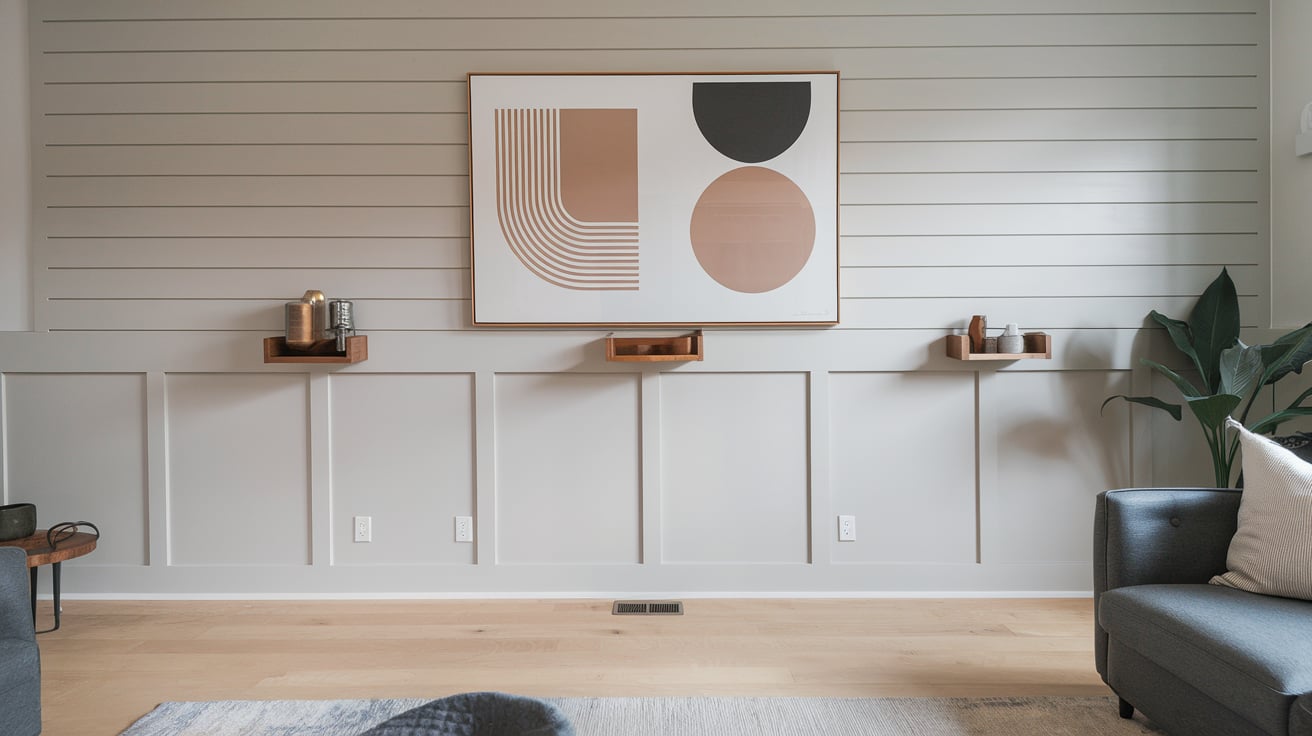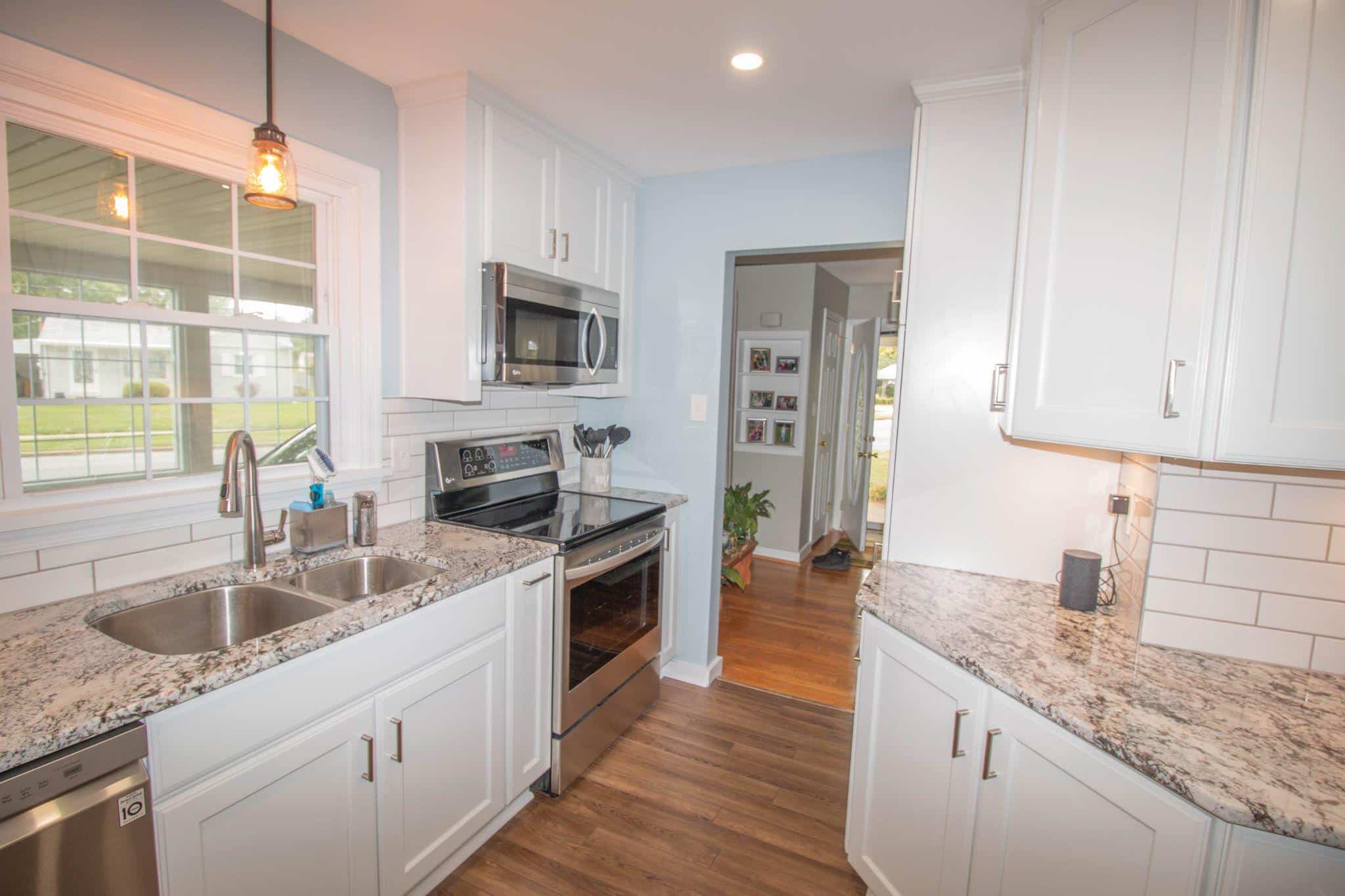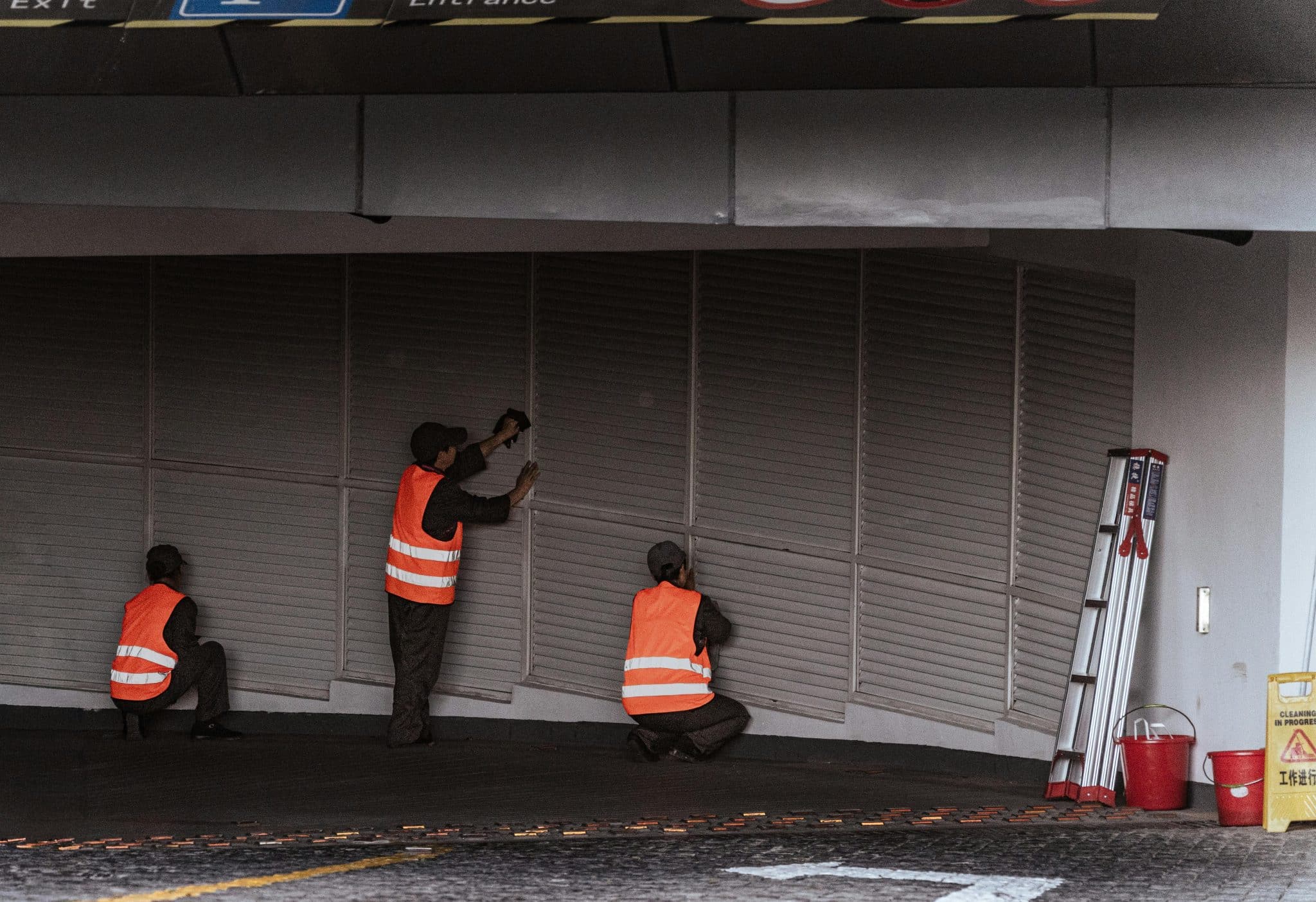Are you looking to add character to plain walls but feeling overwhelmed by complex architectural upgrades?
I understand. I faced the same challenge with my downstairs bathroom’s stark white walls. What started as a simple weekend project transformed my space into something extraordinary.
I’ll show you how to create a stunning battenboard wall that adds instant architectural interest without breaking the bank or requiring professional help.
In this guide, I’ll share my step-by-step process for installing this classic wall treatment. I’ll also include smart installation tips that make the project foolproof and design ideas to help you create the perfect pattern for your space.
Ready to transform your room from basic to beautiful? Let’s get started.
Tools Required
| Tool | Purpose | Quantity |
|---|---|---|
| Measuring Tape | To measure lengths of MDF strips and placement on the wall | 1 |
| Laser Level | To ensure straight, level alignment of strips | 1 |
| Brad Nailer | To securely attach MDF strips to the wall | 1 |
| 15mm Nails | For use with the brad nailer to attach MDF strips | Sufficient for project |
| Nail Punch | To sink nails below the surface after nailing | 1 |
| Sanding Blocks/Sandpaper | For smoothing the surface of MDF strips and wall edges | 1 set |
| Paint Brushes | For applying primer and paint in detailed areas | 2-3 |
| Foam Roller | For even application of paint on the wall and MDF strips | 1 |
| Drill | To create pilot holes for screws or trim attachment | 1 |
| Screws | For securing trim or other elements | Sufficient for project |
| Sealant Gun | Apply sealant where needed | 1 |
| Miter Saw | To cut MDF strips to the required lengths | 1 |
Materials Required
| Material | Purpose | Quantity |
|---|---|---|
| 9mm Thick MDF Boards | For cutting into 100mm wide strips to create the batten board | As per wall size |
| Wood Glue | For bonding MDF strips to the wall | 1 bottle |
| Primer (Leland Acrylic Primer and Undercoat) | For preparing MDF and wall surfaces for painting | 1-2 cans |
| Paint (Silk Finish Emulsion) | To provide a smooth, finished look on the MDF and wall | 1-2 cans |
| Wood Filler | To fill any holes or gaps in MDF or wall | 1 container |
| Masking Tape | To protect areas during the painting | 1 roll |
| Decorative Trim (for top edge) | To finish off the top of the MDF strips with a clean look | As per wall size |
Step-by-Step Guidance For Batten-Board Wall
Step 1: Design Layout
The demonstrator starts by using masking tape to create a rough layout on the wall, placing it approximately one meter high from the floor.
This visualization helps confirm the design before purchasing materials, breaking the w. Thepanelsis divided with 100mm wide, each made of 100 mm-wide
Step 2: Acquiring Materials
The presenter purchased 9mm thick MDF from a DIY shop and had it cut for free on their panel saw. While readymade board and batten packs were available, they cut custom pieces for cost efficiency and flexibility.
Step 3: Preparing the MDF
Before installation, the MDF pieces are primed on a workbench.
The demonstrator uses Leland acrylic primer and undercoat, marking areas that need painting while leaving sections where glue will be applied unpainted. Edges are sanded to remove cutting marks.
Step 4: Mounting the Backboard
The first assembly step involves mounting a backboard to the wall.
Using a magnet to locate studs through plasterboard screws, the board is mounted with shims to raise it slightly from the skirting, using a laser level to ensure proper alignment.
Step 5: Installing the Rails
The top rail is measured precisely between walls and cut slightly shorter using a miter saw.
It is then attached using wood glue and a brad nailer with 15-mm nails, which require a nail punch to ensure all nails sit below the surface.
Step 6: Placing Vertical Strips
The spacing is calculated based on the principle that panels should be approximately twice as high as wide.
The formula subtracts the total rail width from the wall width and divides it by the number of desired panels.
Step 7: Adding Trim and Finishing
A ball-nose trim piece is added to the top for decoration. Once dried, all nail holes are filled with wood filler and sanded smooth.
Step 8: Painting the Panels
The entire structure receives two coats of paint (in this case, a denim drift silk finish emulsion), using a brush for corners and a foam roller for larger areas.
Step 9: Sealing the Edges
Final Sealing The last step involves applying sealant around the perimeter using masking tape on both the panel and wall sides to achieve clean edges.
Video Tutorial
Check out this YouTube video for a detailed step-by-step tutorial on making the best Batten-Board Wall.
Tips and Tricks for the Batten Board Wall
| Tip Number | Tip | Description |
|---|---|---|
| 1 | Install a Full Backboard | Installing a full backboard rather than attaching MDF strips directly to the wall helps out wall irregularities, adds depth, and makes future removal easier with minimal wall damage. |
| 2 | Handle Small Gaps Without Caulk | If the gap between pieces is less than a millimeter, caulk isn’t needed as paint will hide small imperfections. Use minimal caulk for larger gaps to avoid rounding off clean corners. |
| 3 | Use Fresh Paint and a New Foam Roller for the Final Coat | Use fresh paint and a new foam roller for a smooth, even finish with excellent sheen. Paint corners and detailed areas with a brush before rolling larger surfaces for complete coverage. |
| 4 | Masking Tape for Crisp Sealant Edges | When applying sealant, use masking tape on both the wall and paneling sides to achieve crisp, clean lines, ensuring a more professional-looking result. |
Maintenance of Batten-Board wall
1. Maintaining your board-and-batten wall requires minimal effort but consistent care. Regular dusting with a soft cloth or duster prevents dirt accumulation in the panel grooves and corners.
For deeper cleaning, use a slightly damp cloth and a mild soap solution, being careful not to oversaturate the MDF. Address any scuffs or marks promptly with gentle cleaning to prevent permanent staining of the paint surface.
2. Inspect the paneling periodically for any loose sections or separation from the backboard.
If you notice any gaps developing at the joints or edges, address them promptly with appropriate wood filler or caulk to prevent moisture penetration.
Depending on wear and tear, touch-up paint may be necessary every few years to maintain the feature wall’s fresh appearance.
Common Mistakes
1. Installing directly onto walls without a backboard creates numerous challenges.
Beyond the difficult removal process, this approach often results in uneven surfaces and problematic gaps. The backboard method ensures smoother installation and better longevity of the feature wall.
2. Incorrect spacing calculations frequently lead to unbalanced panels.
Precise measurements and calculations before cutting any materials prevent awkward-looking narrow panels at the edges or uneven spacing between vertical strips.
Always account for the width of the MDF strips when calculating panel spaces.
3. Rushing the preparation phase often results in visible flaws. Inadequate priming of MDF, especially on cut edges, can lead to paint absorption issues and an uneven finish.
Similarly, skipping proper sanding between coats of paint or filler can leave a rough, unprofessional appearance.
4. Poor moisture management in bathrooms or high-humidity areas can cause MDF deterioration.
In these spaces, using appropriate primers and moisture-resistant paints becomes crucial.
Ensuring proper ventilation and promptly addressing any water spills also helps maintain the paneling’s integrity.
5. Paint application mistakes frequently occur when the process is rushed.
Inadequate drying time between coats, using old or contaminated rollers, and poor masking technique can all compromise the final appearance.
Taking time with each step of the painting process ensures a professional, lasting finish.
Conclusion
From measuring and planning to that final coat of paint, transforming a plain wall into an architectural feature has been quite the journey.
While the process might seem intricate initially, breaking it down into manageable steps makes this project entirely achievable for any homeowner.
The beauty of a battenboard wall lies not just in its visual appeal but in its versatility.
Whether installed in a cozy reading nook, a sophisticated dining room, or a simple bathroom like mine, this classic design element elevates any space it graces.
Remember, patience during installation and attention to detail make the difference between a good and great result.
Trust me, the satisfaction of completing this project yourself is worth every careful measurement and precise cut.








